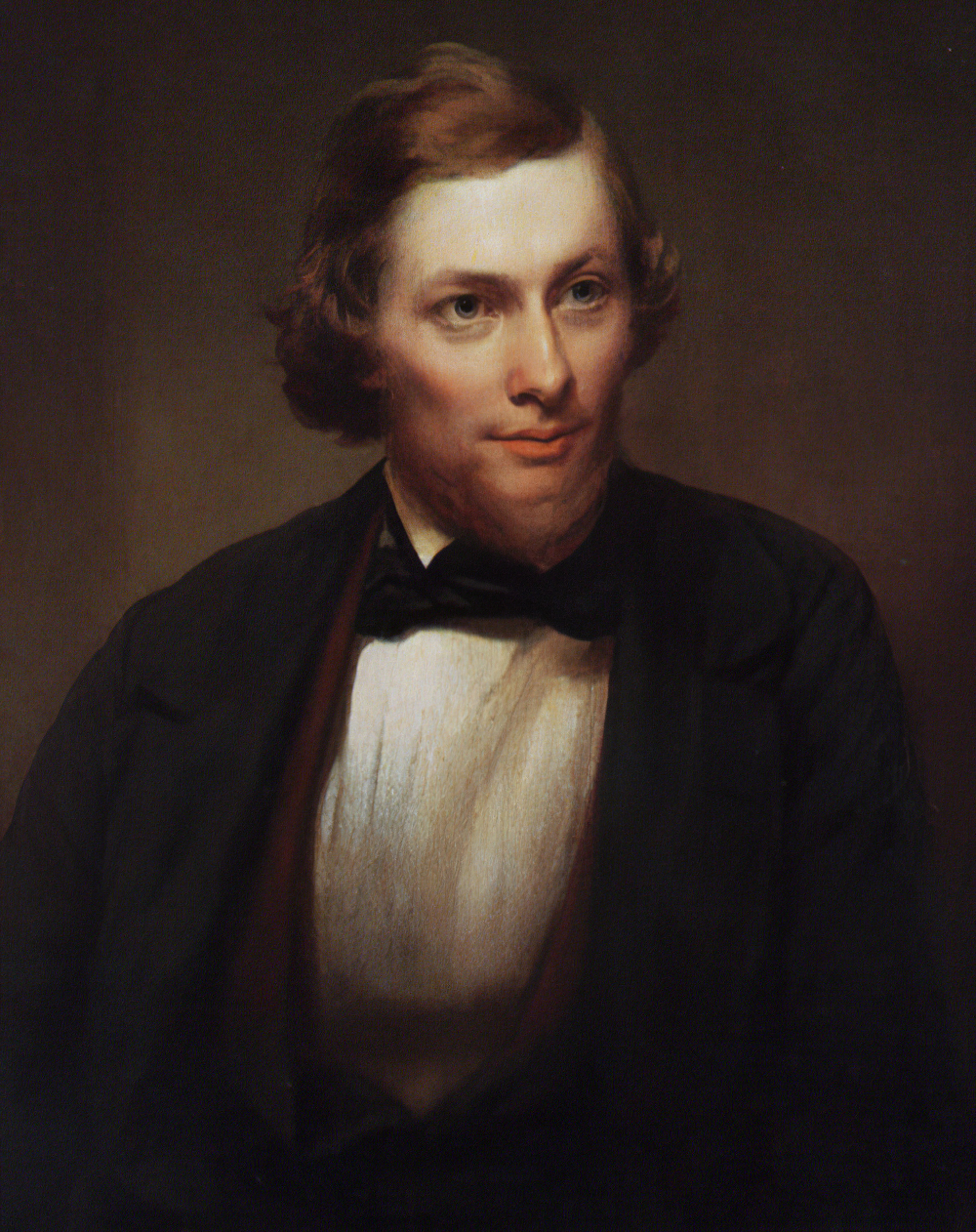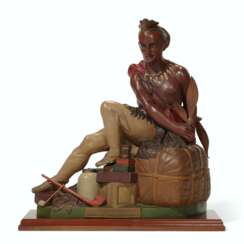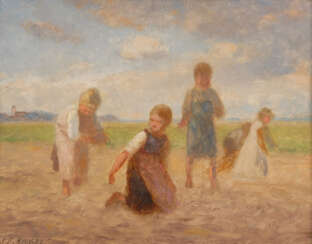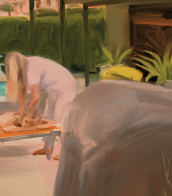albany paint

Thomas Cole, an English-born American artist, stands as a foundational figure in the Hudson River School, a movement that significantly shaped the course of American landscape painting. Born in Bolton-le-Moors, Lancashire, England, in 1801, Cole moved to the United States in 1818, where he embarked on a journey that would see him become one of the most influential artists of his time.
Thomas Cole's artistry is renowned for its romantic portrayal of the American wilderness, imbuing his landscapes with a spiritual and almost sublime quality that reflects his deep appreciation for nature. His works, such as "The Course of Empire" series and "The Voyage of Life," not only depict the beauty of the American landscape but also convey profound messages about humanity's relationship with the natural world. These series, showcasing the rise and fall of civilizations and the stages of human life against the backdrop of the natural world, highlight his philosophical and environmental concerns.
His technique of sketching directly from nature before creating detailed, idealized compositions became a hallmark of his style and influenced future generations of artists, including Frederic Edwin Church and Asher B. Durand. Thomas Cole's legacy extends beyond his paintings, as he played a pivotal role in the development of an art movement that celebrated the unique character of the American landscape, which was seen as a reflection of the nation's identity.
Thomas Cole's works are preserved in prestigious institutions like the New-York Historical Society, the Museum of Fine Arts in Boston, and the Metropolitan Museum of Art, serving as enduring testaments to his artistic genius and his profound connection to the American landscape.
For collectors and art enthusiasts, understanding Thomas Cole's influence and the themes he explored offers invaluable insights into the evolution of American landscape painting. If you're interested in staying updated on exhibitions, sales, and events related to Thomas Cole's works, consider signing up for updates to deepen your appreciation and knowledge of this iconic artist's contributions to American art and culture.


Martin Wong was a Chinese-American painter of the late 20th century. His work has been described as a meticulous blend of social realism and visionary art styles. Wong's paintings often explored multiple ethnic and racial identities, exhibited cross-cultural elements, demonstrated multilingualism, and celebrated his queer sexuality.


Ammi Phillips was a prolific American itinerant portrait painter active from the mid 1810s to the early 1860s in Connecticut, Massachusetts, and New York. His artwork is identified as folk art, primitive art, provincial art, and itinerant art without consensus among scholars, pointing to the enigmatic nature of his work and life. He is attributed to over eight hundred paintings, although only eleven are signed. While his paintings are formulaic in nature, Phillips paintings were under constant construction, evolving as he added or discarded what he found successful, while taking care to add personal details that spoke to the identity of those who hired him. He is most famous for his portraits of children in red, although children only account for ten percent of his entire body of work. The most well known of this series, Girl in Red Dress with Cat and Dog, would be sold for one million dollars, a first for folk art. His paintings hung mostly unidentified, spare for some recognition in the collections like those of Edward Duff Balken, for decades until his oeuvre was reconstructed by Barbara Holdridge and Larry Holdridge, collectors and students of American folk art, with the support of the art historian Mary Black. Ammi Phillip's body of work was expanded upon their discovery that the mysterious paintings of a "Kent Limner" and "Border Limner" were indeed his.


Sanford Robinson Gifford was an American landscape painter and a leading member of the second generation of Hudson River School artists. A highly-regarded practitioner of Luminism, his work was noted for its emphasis on light and soft atmospheric effects.


Alan Davie — a Scottish artist and musician.


Jasper Francis Cropsey was an important American landscape artist of the Hudson River School.
Cropsey's interest in architecture continued throughout his life and was a strong influence in his painting, most evident in his precise arrangement and outline of forms. But Cropsey was best known for his lavish use of color and, as a first-generation member from the Hudson River School, painted autumn landscapes that startled viewers with their boldness and brilliance. As an artist, he believed landscapes were the highest art form and that nature was a direct manifestation of God. He also felt a patriotic affiliation with nature and saw his paintings as depicting the rugged and unspoiled qualities of America.


Johann Jakob Frey was a Swiss landscape painter.
Johann Jakob Frey travelled extensively in Italy, especially in and around Rome, making landscape sketches. In his studio he used these sketches to create paintings. He also traveled to Spain and Egypt to sketch for later works.
Frey's pictorial style is based on paintings by Josef Koch or Franz Horny. For example, they often feature a richly detailed foreground, which often shows elements such as winding paths or rivers drawing the viewer's attention away.


David Roberts was a Scottish painter and a member of the Royal Academy.
Since 1819, David Roberts worked as a scenographer in various theaters, where his creative potential was appreciated. Inspired by the positive feedback, some time later he seriously engaged in painting. After the first exhibition of works, held in 1824, the artist went on a trip. He visited several countries in Europe, where he created many drawings. In 1833, David Roberts continued to explore the world: he went to Spain, where he spent almost a year, also had time to visit Morocco, lived in Cairo for a long time and made sketches everywhere. Subsequently, his works were published in various magazines, and the author gained fame as a talented illustrator. In 1841, the artist became a member of the Royal Academy.
In the 1840s, an album with his works was published, thanks to these publications, David Roberts became the most famous painter of the Victorian era. The artist also skillfully depicted monuments of architecture. David Roberts' paintings are striking in their photographic accuracy, and he is still considered one of the best architectural painters in his homeland.


David Roberts was a Scottish painter and a member of the Royal Academy.
Since 1819, David Roberts worked as a scenographer in various theaters, where his creative potential was appreciated. Inspired by the positive feedback, some time later he seriously engaged in painting. After the first exhibition of works, held in 1824, the artist went on a trip. He visited several countries in Europe, where he created many drawings. In 1833, David Roberts continued to explore the world: he went to Spain, where he spent almost a year, also had time to visit Morocco, lived in Cairo for a long time and made sketches everywhere. Subsequently, his works were published in various magazines, and the author gained fame as a talented illustrator. In 1841, the artist became a member of the Royal Academy.
In the 1840s, an album with his works was published, thanks to these publications, David Roberts became the most famous painter of the Victorian era. The artist also skillfully depicted monuments of architecture. David Roberts' paintings are striking in their photographic accuracy, and he is still considered one of the best architectural painters in his homeland.


Richard Ernst Artschwager was an American painter, illustrator and sculptor. His work has associations with Pop Art, Conceptual art and Minimalism.




David Roland Smith is an American sculptor and expressionist painter.
Smith became known as the creator of large-scale steel geometric sculptures in an abstract style inspired by the works of Picasso.
But Smith is also a prolific painter-drawer; he drew all his life, making hundreds of drawings a year. His subjects included various figures and landscapes, a series of nudes, and he also drew almost calligraphic signs with egg yolk, Chinese ink and brushes.



































































![[Four Indian Kings of Canada]](/assets/image/picture_2155617/8cf1c/f5c7262754e9e14e95fdfc2839f68f8f1653429600jpg__fix_374_244.jpeg)
![[Four Indian Kings of Canada]](https://veryimportantlot.com/assets/image/picture_2155617/8cf1c/f5c7262754e9e14e95fdfc2839f68f8f1653429600jpg__fix_374_244.jpeg)





